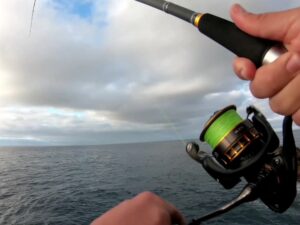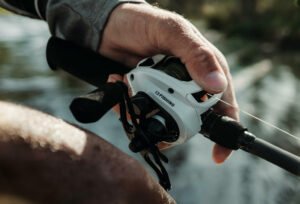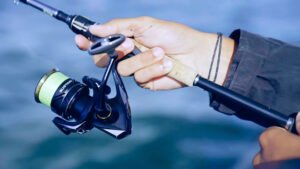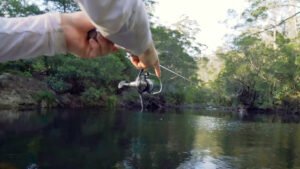Spotted Bass
Spotted bass are the lesser known cousin of the largemouth and smallmouth bass and can be found in many of the same habitats. They are an excellent game fish and put up a great fight when hooked on your fishing line. Read more about the spotted bass below.
Home » Knowledge Base » Species » Spotted Bass
Spotted Bass Overview:
Common name: Spotted Bass
Scientific name: Micropterus punctulatus
Other names: Spotty, spots, Alabama spotted bass, Coosa spotted bass, Kentucky bass, redeye bass
The spotted bass is a black bass species of North American freshwater fish that is part of the sunfish family and is native to the Mississippi River basin. It is distinguishable from other black basses by the rows of dark spots below the lateral line. Spotted bass can reach an overall length of almost 25 inches, and weights of up to 11 lbs. (1)
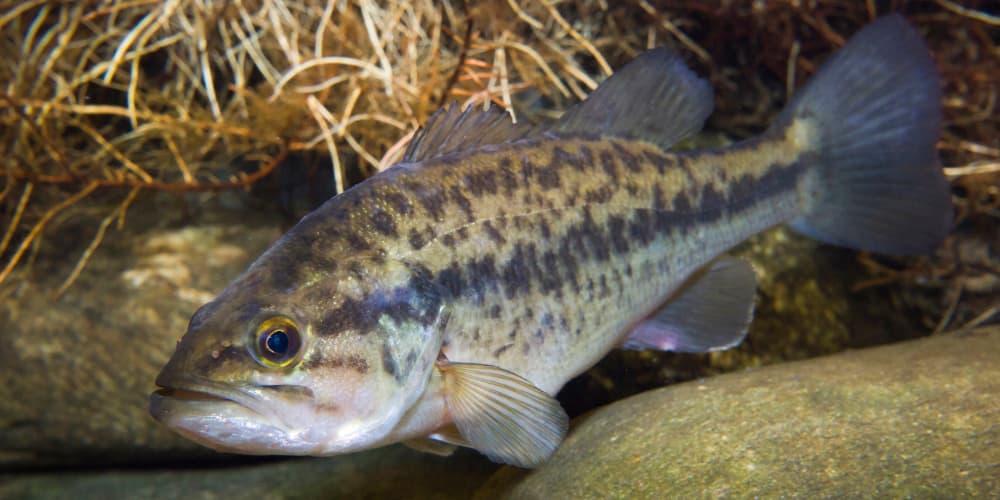
Key Characteristics
The spotted bass is a medium-sized fish and can reach a maximum length of 25 inches and a maximum weight of 11 pounds, though most are going to be under 21 inches and won’t get over 7 pounds.
The spotted bass has a large mouth and the lower jaw extends beyond the upper jaw. The spotted bass has a dark green, olive or brown body with 12-49 dark spots below the lateral line. The average spots per fish is 14.
Spotted bass have a dark subterminal band on the tail, a spot just above the lateral line, and a black spot at the base of the anal fin. They have a slightly rounded tail and the back is usually a darker green than the sides. The “diamond” shaped spots are usually a light to dark green color with a black “rim” at the outer edge of the spot.
The spotted bass is similar in coloration to the largemouth, but it has a smaller mouth. It can also be distinguished by the scales on the base portion of the second dorsal fin, and the absence of vertical bars on its sides.
They can also be can be distinguished from the smallmouth bass by its lack of vertical bars on its sides and the small black spots below the lateral line. (2)
Ideal Habitat
Spotted bass are found in a variety of freshwater habitats, but are most commonly found in larger streams and rivers as well as in reservoirs. Spotted bass are found in many of the same reservoir habitats that largemouth bass are found in.
They are usually found in medium to large lakes, reservoirs, and large rivers. They are also seen in streams, but are not as common in these habitats. They prefer warmer water than smallmouth and slightly more turbid water than largemouth bass.
The spotted bass is an active fish, and is most commonly found at dawn and dusk. The best habitat for spotted bass is where there is plenty of cover and structure, such as fallen trees and rocks, for them to use for cover.
Spotted bass are not as active swimmers as largemouth bass are, which means they do not require as much open water. They are a medium-aggressive fish and will defend their territory and food, so they will be found around cover most often. (3)
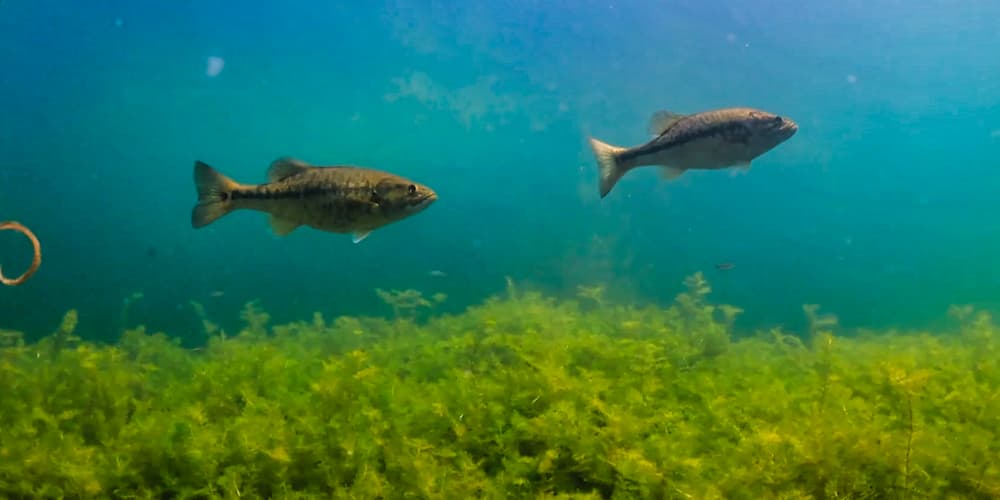
Feeding Patterns
Spotted bass prey on a wide variety of foods including minnows, small fish, crawfish, insects, and crayfish. Juveniles feed on small crustaceans and insect larvae. Larger spotted bass eat a variety of adult fish such as smallmouth bass, yellow perch, and sunfish. Larger spotted bass have also been known to eat other small predators such as northern pike, walleye, and even muskellunge.
They are opportunistic feeders, and will try to eat just about anything that presents itself to them.
Spotted bass will be active throughout the year, but they will suspend deeper in the water column during the winter and early spring as water temperatures get cold. (4)
Spawning Season
In terms of reproduction, spotted bass are believed to be similar to the largemouth bass. The spotted bass is sexually mature around one year of age, and spawning occurs from March through May. Spawning takes place in the spring when the water temperature reaches 63F degrees.
Spawning occurs in loose groups in quiet, shallow water with cover, such as fallen trees, large rocks, and vegetation. Though they prefer to spawn in areas with gravel substrate, where they can clear a spawning area by fanning their tails.
The male clears a spawning area on a gravel bed, and the female will deposit her eggs. As the egg string is released, the female swims over it, coating it with her body fluids, which keeps the eggs safe and allows the female to be ready to defend them if needed.
The male bass will then aggressively guard the eggs until they hatch in 72-90 hours. After hatching, the young remain in the nest for an additional three to four days before venturing out. The male spotted bass will stay with his brood for a total of fifteen days.
After spawning, the adults will move to deeper water, and the juveniles will stay in the shallows to grow. (5)
5 Fishing Tips For Catching Spotted Bass
Spotted bass are a very underrated fish in lakes and reservoirs around the country. It is a fish that can be caught on just about any type of lures, including crankbaits and topwaters but can also be pursued on artificial worms and jigs. If you find the right spots, you can pick up a few of these fish and fill your stringer up with a bunch of them. Let’s look at some tips for catching spotted bass.
1. Fish The Deep Waters
Spotted bass are a very deep-water fish. They will usually be found down ten feet or more, and they usually hang around deep structure. In the winter, spots may be as deep as 100 feet down.
Look for areas that have deep water, plenty of rocks, or prominent points where deeper water will be found.
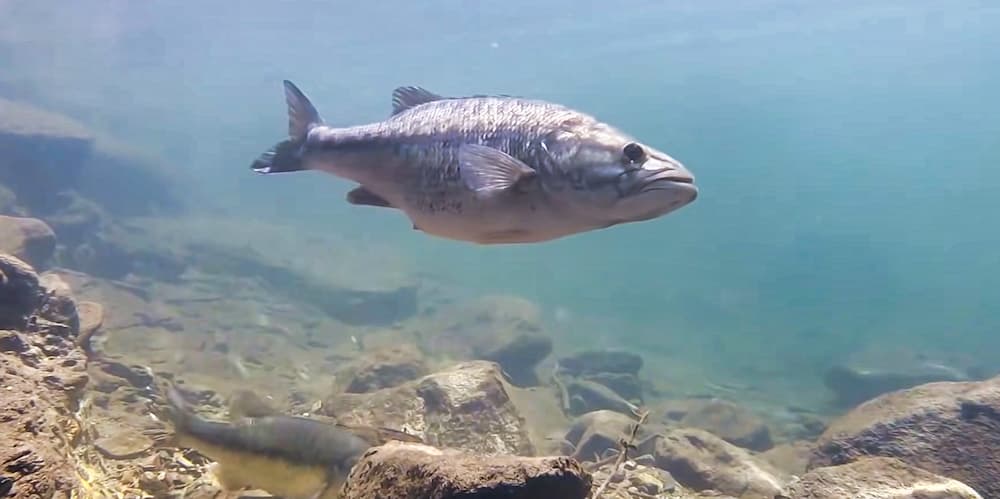
2. Use The Best Lure For The Job
If you are searching for spots, you will want to use the best lure for the job, which is usually a deep-diving crankbait, spinnerbait or diving jig. Spotted bass are fast fish that will hit your lure and take off.
You will need to have a strong rod and reel that can handle a big fish if you are going after a spotted bass. Choose a rod with a flexible tip and a reel that can handle the strong runs of a spotted bass.
3. Fish Around Baitfish
4. Fish The Edges
Spots are a fairly aggressive fish that will aggressively compete for food and territory. Because of this, they are usually found around deep structure and the edges. Look for points and areas between rocks, stickups and other structure where the deep water starts to drop off and the baitfish are being pushed out.
5. Target Humps
Best Destinations
There are many great spotted bass fishing locations throughout all of North America that most anglers can easily get access to. Here are a few of the best places to fish for spottys:
- Coosa River, Alabama
- Guadalupe River, East Texas
- New Bullards Bar
- Reservoir, Northern California
- Chattahoochee River, Georgia
- Through the Gulf Slope area
- Ohio River, Ohio
- Lake Norman, North Carolina
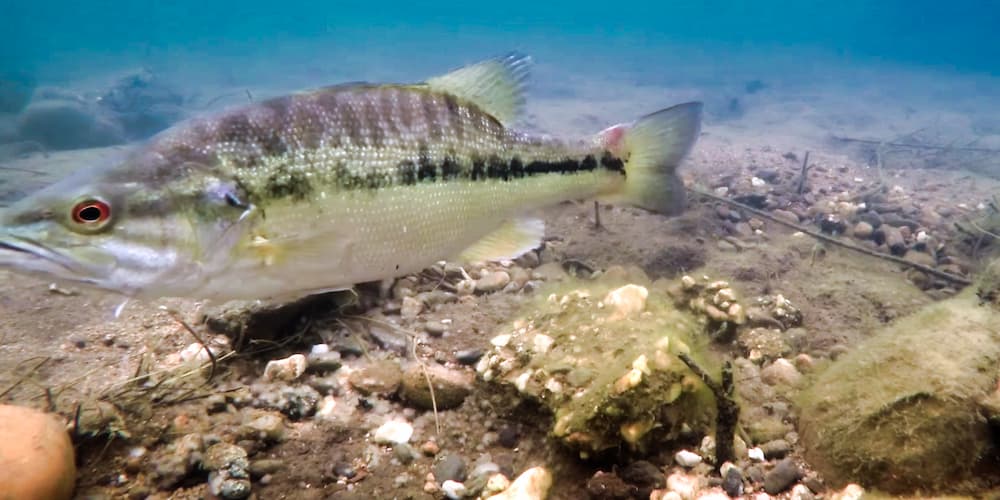
Conclusion
Spotted bass are a very popular game fish. They are aggressive and tend to hit hard when they strike. They are just as strong of a fighter as their largemouth and smallmouth black bass cousins, and will put up a fight if you hook them.
If you are bass fishing and looking to catch some spotted bass, look for humps, fallen trees, docks, rocks, and other deep structure. They will be found in deep water around these areas and will attack anything that swims within reach.
Use the best lure for the job and have a strong rod and reel to handle the spotted bass if you want to land one.
If you are looking for a new fish to try, the spotted bass may be the one for you.
As an Amazon Associate I earn from qualifying purchases.
Table of Contents
- https://en.wikipedia.org/wiki/Spotted_bass
- https://igfa.org/game-fish-database/?search_type=SpeciesID&search_term_1=90
- https://mdc.mo.gov/discover-nature/field-guide/spotted-bass
- http://aquafind.com/Bass/Bass-Spotted2.php
- https://www.dnr.sc.gov/fish/species/spottedbass.html
- https://www.gameandfishmag.com/editorial/tips-for-catching-deep-cold-water-spotted-bass/339403
- https://shopkarls.com/blog/spotted-bass/

